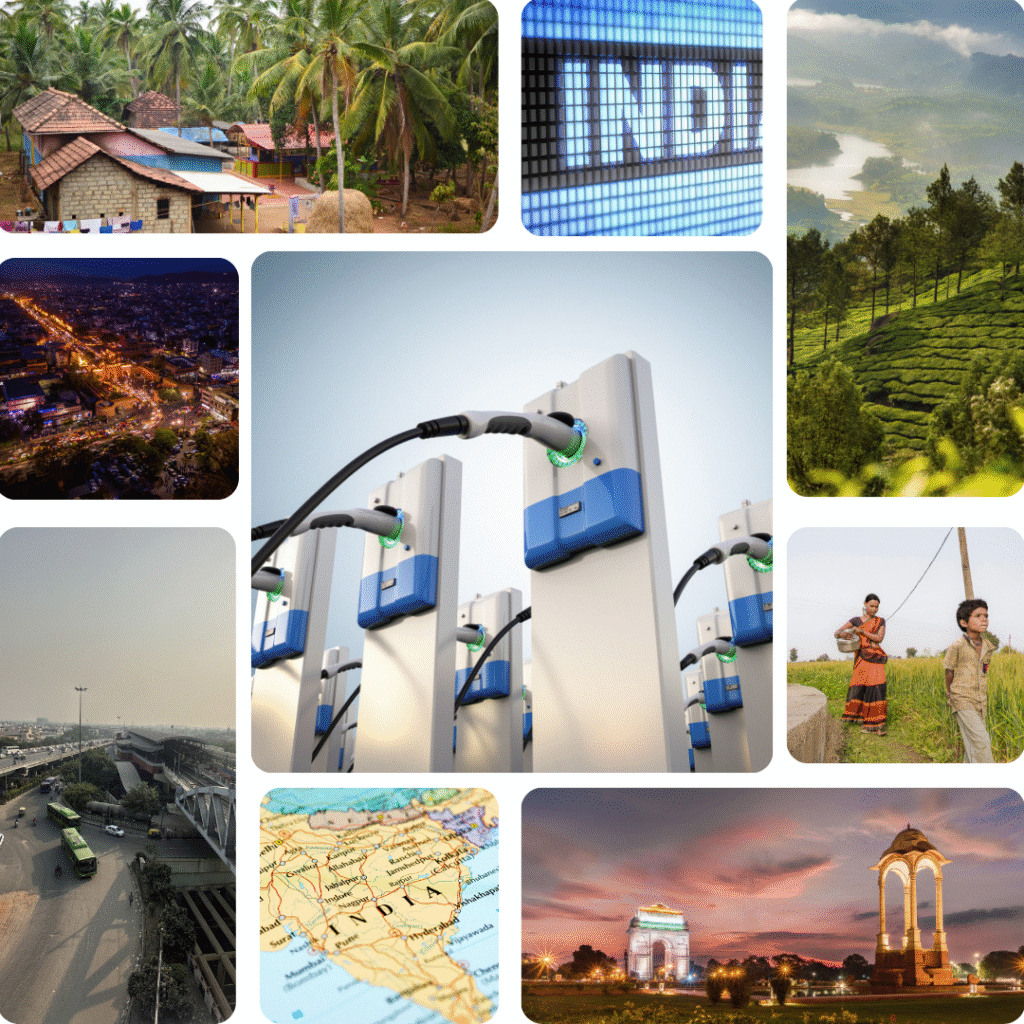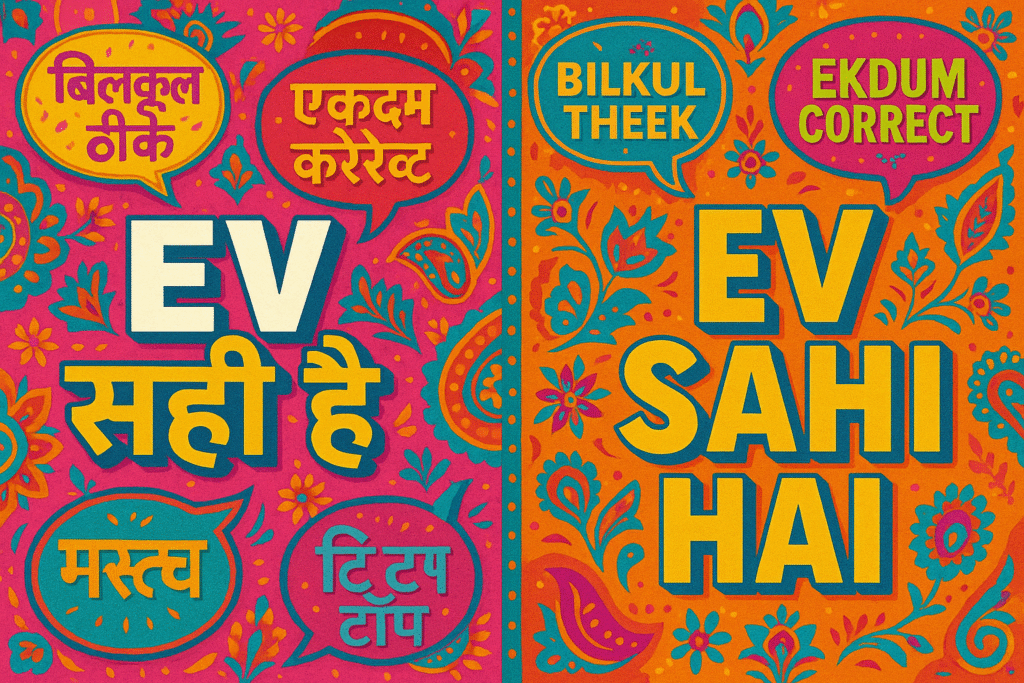
MG Motor’s “EV Sahi Hai” campaign represents a calculated attempt to address India’s electric vehicle adoption challenges through testimonial-driven marketing. Drawing inspiration from the successful “Mutual Fund Sahi Hai” campaign, this initiative employs a structured two-phase approach that merits both admiration and scrutiny. Here’s a comprehensive analysis of its strengths and vulnerabilities.
- Campaign Architecture and Strategic Framework
- Testimonial Authenticity: The Campaign's Greatest Asset
- Addressing Market-Specific Concerns with Precision
- Strategic Weaknesses and Missed Opportunities
- Cultural Resonance and Linguistic Strategy
- Competitive Positioning and Market Context
- Digital Strategy and Distribution Effectiveness
- Measurement Challenges and Success Metrics
- Future Implications and Strategic Evolution
Campaign Architecture and Strategic Framework
The campaign’s foundational strength lies in its methodical approach to dismantling specific barriers to EV adoption. Launched in August 2025, it consists of a teaser film followed by targeted testimonial videos, each addressing distinct consumer concerns: range anxiety, charging infrastructure, running costs, and long-term savings.
This systematic deconstruction of objections demonstrates sophisticated market research and consumer psychology understanding.medianews4u+2
The structural coherence is particularly evident in the video sequence. The opening teaser “Kya EV Lena Sahi Hai?” positions genuine consumer concerns—”Do they have enough charging stations across cities? Outside cities? Across states?”—before systematically addressing each through real customer experiences. This creates a narrative arc that mirrors the consumer journey from scepticism to acceptance.youtube
Testimonial Authenticity: The Campaign’s Greatest Asset
The campaign’s most compelling strength is its commitment to authenticity through unscripted customer testimonials.
Unlike polished marketing communications, these testimonials feature natural speech patterns, regional accents, and genuine emotional responses that resonate with Indian consumers.
Sai Datta Vamshi’s account of driving from Bangalore to Kodaikanal with “no issues throughout the trip” carries more weight than any corporate claims about range capability.youtubesaaspirin+1
The diversity of testimonial subjects—from a pilot (Ishmeet Grover) to a doctor (Dr. Jitesh Sahgal) to middle-class family men—creates multiple touchpoints for various consumer segments. This demographic breadth acknowledges India’s heterogeneous market whilst providing relatable voices for different socioeconomic groups.youtube+1
Particularly effective is Pradeep Dhankar’s testimonial, which transforms the traditional middle-class anxiety about large purchases into an investment narrative.
His assertion that monthly savings of ₹10,000-15,000 will fund his next vehicle purchase after 10-12 years speaks directly to India’s value-conscious consumers.
This long-term financial planning angle addresses the higher upfront costs concern through delayed gratification psychology.indoen+1
Addressing Market-Specific Concerns with Precision
The campaign demonstrates acute awareness of India-specific barriers to EV adoption. Range anxiety, identified as a primary concern in multiple studies, is directly confronted through Sai’s interstate travel narrative.
His testimony of finding charging stations “everywhere” on the Bangalore-Kodaikanal route provides concrete evidence against infrastructure inadequacy fears.caronphone+2
The economic messaging particularly resonates with Indian consumers.
Vinod Unni’s comparison—spending ₹1,000 monthly on charging versus his wife’s ₹10,000-11,000 petrol costs—provides tangible proof of operational savings.
Dr. Sahgal’s claim of saving approximately ₹1 lakh over four years addresses long-term value propositions whilst maintaining credibility through specific figures.youtube+1
Strategic Weaknesses and Missed Opportunities

Despite its strengths, the campaign exhibits notable limitations. The testimonial selection, whilst diverse, lacks representation from tier-2 and tier-3 cities where infrastructure concerns are most acute.
The predominantly urban, educated demographic of testimonial subjects may inadvertently reinforce perceptions that EVs are suitable only for metropolitan consumers.growthjockey+1
The campaign’s brevity—30-second testimonials—whilst attention-optimised for digital consumption, prevents deeper exploration of customer journeys. Complex issues like battery replacement costs, resale value uncertainty, and seasonal performance variations receive insufficient attention. These omissions could prove costly as sophisticated consumers demand comprehensive information.resconpartners
Most significantly, the campaign fails to address service infrastructure concerns, which multiple studies identify as critical adoption barriers.
None of the testimonials discuss maintenance experiences, service availability, or repair networks—oversights that could undermine credibility among pragmatic consumers.ijsred+1
Cultural Resonance and Linguistic Strategy

The campaign’s bilingual approach—Hindi testimonials with English subtitles and vice versa—demonstrates cultural sensitivity whilst maintaining broad accessibility. The use of colloquial expressions and natural speech patterns enhances authenticity, contrasting sharply with typical automotive advertising’s polished vernacular.
The tagline “EV Sahi Hai” itself is culturally astute, employing familiar linguistic structures that feel conversational rather than commercial.
This mirrors the “Mutual Fund Sahi Hai” campaign’s success in normalising complex financial products through accessible language.mediainfoline+1
Competitive Positioning and Market Context
Within India’s competitive automotive landscape, the campaign distinguishes MG Motor through category leadership rather than product differentiation.
By positioning themselves as EV education evangelists rather than mere car sellers, MG attempts to transcend traditional brand competition whilst building sector credibility.indiatoday+1
However, this strategy carries risks. As the campaign succeeds in reducing EV scepticism, it potentially benefits all EV manufacturers, not exclusively MG.
The absence of brand-specific differentiators in testimonials could dilute competitive advantages as the market matures.
Digital Strategy and Distribution Effectiveness
The campaign’s multi-platform distribution—across television, digital platforms, and social media—maximises reach whilst maintaining message consistency. The dedicated website www.evsahihai.com provides comprehensive information beyond the testimonials, creating a complete customer education ecosystem.medianews4u
The timing coincides with increasing EV interest and government policy support, maximising environmental receptivity.
The August 2025 launch capitalises on festival season purchasing patterns whilst avoiding monsoon-related infrastructure concerns.
Measurement Challenges and Success Metrics
Evaluating testimonial advertising effectiveness presents inherent challenges.
Unlike product-focused campaigns with direct sales attribution, awareness campaigns require longer measurement horizons and more sophisticated metrics.
MG Motor’s 35% market share in India’s EV segment provides a baseline, but isolating this campaign’s specific contribution remains complex.indiatoday+1
The campaign’s success should ultimately be measured through shifted consumer sentiment, reduced consideration barriers, and increased test drive conversions rather than immediate sales impact.
Future Implications and Strategic Evolution
As India’s EV market matures, testimonial-driven campaigns will likely become standard practice. MG’s early adoption of this strategy provides first-mover advantages in consumer trust building, but sustainability requires continuous testimonial refreshment and expanded customer story diversity.
The campaign’s second phase, featuring celebrities Varun Sharma and Pulkit Samrat, risks undermining the authenticity that defines the first phase. Balancing star power with credibility represents a significant strategic challenge.mediainfoline+1
The “EV Sahi Hai” campaign succeeds in its primary objective—reducing consumer scepticism through authentic testimonials that address specific adoption barriers.
Its structured approach, demographic diversity, and cultural sensitivity create a compelling case for EV consideration. However, its urban bias, limited scope, and service infrastructure omissions represent strategic vulnerabilities that sophisticated consumers may exploit.
Ultimately, this campaign exemplifies how testimonial advertising can effectively challenge entrenched consumer attitudes when executed with authenticity and strategic precision.
Whether it translates into sustained market leadership for MG Motor will depend largely on their ability to maintain testimonial quality whilst scaling consumer education efforts across India’s diverse automotive landscape.
Sources:
- https://www.medianews4u.com/jsw-mg-motor-india-launches-ev-sahi-hai-campaign-to-drive-electric-mobility-awareness/
- https://www.mediainfoline.com/advertising/jsw-mg-motor-india-kicks-off-ev-sahi-hai-awareness-campaign
- https://www.indiatoday.in/auto/latest-auto-news/story/mg-launches-ev-sahi-hai-campaign-to-boost-electric-vehicle-awareness-2768424-2025-08-08
- https://www.youtube.com/watch?v=FFtQmIMzeaQ
- https://www.youtube.com/watch?v=ROps_onBN04
- https://www.saaspirin.co/blog/testimonial-advertising
- https://camphouse.io/blog/testimonial-advertising
- https://www.youtube.com/watch?v=XliiY-h0WjQ
- https://www.youtube.com/watch?v=5H-i2_xZY2k
- https://indoen.com/Stories/StoryDetails/indias-ev-dilemma-charging-ahead-or-stuck-in-neutral
- https://caronphone.com/blog/why-indian-consumers-are-unsure-about-switching-to-electric-vehicles/
- https://www.ijsred.com/volume8/issue2/IJSRED-V8I2P237.pdf
- https://www.growthjockey.com/blogs/ev-sales-with-holistic-marketing-strategies
- https://www.resconpartners.com/indias-ev-market-progress-and-comparisons/
- https://www.youtube.com/watch?v=xJQIH69_Ybc
- https://auto.economictimes.indiatimes.com/news/passenger-vehicle/jsw-mg-motor-india-launches-ev-sahi-hai-campaign-to-promote-electric-vehicles/123189829
- https://brandequity.economictimes.indiatimes.com/news/advertising/mg-motors-new-ad-campaign-addresses-peoples-ev-related-concerns/103246808
- https://worldautoforum.com/jsw-mg-motor-india-launches-ev-sahi-hai-awareness-campaign/
- https://www.cars24.com/news/auto/mg-india-launches-a-new-campaign-for-windsor-ev-live-business-class/
- https://www.autocarpro.in/news/eto-motors-partners-with-cashurdrive-for-electric-vehicle-transit-advertising-campaign-126931
- https://www.carlelo.com/blog/secret-to-mg-cars-success-in-india
- https://www.cardekho.com/upcomingcars/electric
- https://www.youtube.com/watch?v=Qi3CkqOQ_dU
- https://www.arenaev.com/mg_comet_lands_in_india_accompanied_by_an_unusual_marketing_campaign-news-1741.php
- https://evindiaexpo.in
- https://www.youtube.com/watch?v=2IXUGoCoVMY
- https://cultureofinternet.com/MG-motors-case-study
- https://www.indiaev.org
- https://www.ndtv.com/auto/jsw-mg-motor-india-launches-ev-sahi-hai-campaign-check-details-9051748
- https://www.linkedin.com/posts/nehalrajguru_evsahihai-mgmotorindia-3years-activity-7359939603476221952-xfSp
- https://www.parati.in/post/from-skepticism-to-enthusiasm-india-s-journey-in-embracing-electric-vehicles
- https://digitalscholar.in/automobile-digital-marketing-case-studies-india/
- https://pagefly.io/blogs/shopify/testimonial-advertising
- https://www.drm.org/drm-awareness-campaign-for-the-indian-automotive-industry/
- https://upqode.com/testimonial-advertising/
- https://www.afaqs.com/news/advertising/koda-auto-india-launches-a-new-marketing-campaign-make-every-km-count
- https://www.evmechanica.com/what-are-the-main-psychological-barriers-indian-consumers-face-when-switching-to-evs-despite-the-growing-availability/
- https://www.bazaarvoice.com/blog/what-are-testimonial-ads-and-why-do-they-work/
- https://brandonwheelz.com/innovative-campaign/
- https://www.shopify.com/in/blog/testimonial-advertising
- https://www.themediaant.com/blog/effective-automobile-advertising-campaigns/
- https://www.mckinsey.com/industries/automotive-and-assembly/our-insights/consumers-are-driving-the-transition-to-electric-cars-in-india
- https://okendo.io/resources/blog/testimonial-advertising/
